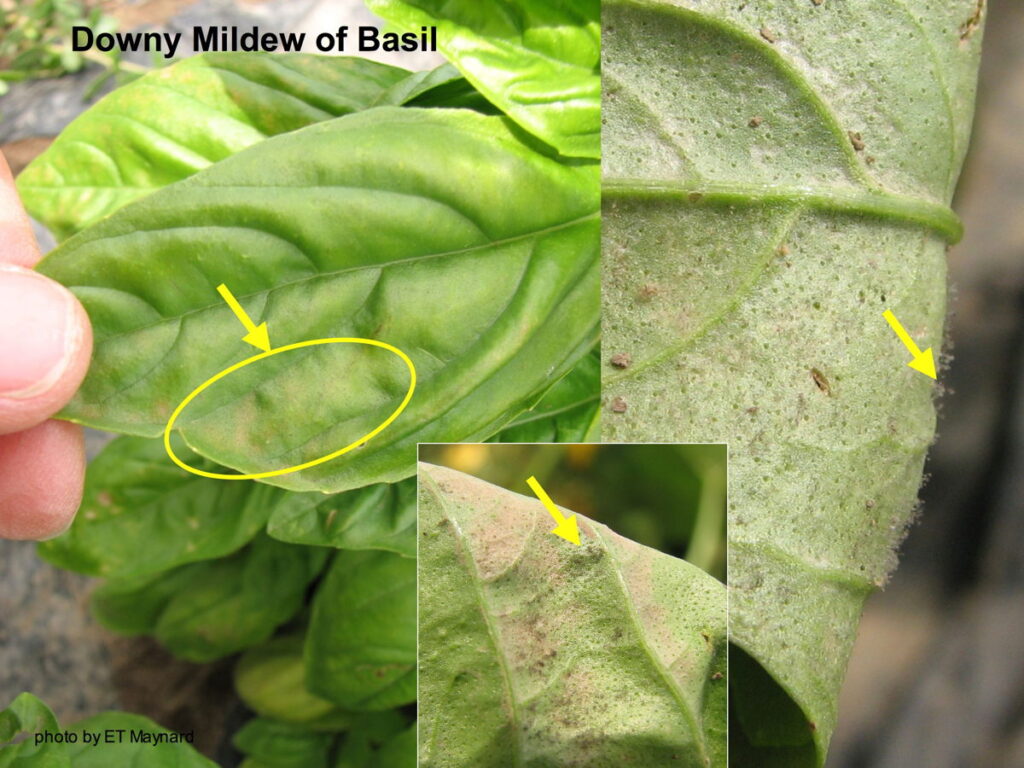Basil downy mildew has appeared in northern Indiana. As described in a previous article, this pathogen does not overwinter; instead, it must blow in from the south. It can move rapidly through the crop, making it unmarketable.
Earlier this year, Meg McGrath, plant pathologist retired from Cornell, notified us that Rutgers researchers are requesting samples of the pathogen. The information she provided follows:
Basil production is still threatened by downy mildew because current methods of prevention and resistance are wavering. It appears that the pathogen is evolving rapidly, and we need your help to understand this phenomenon. Researchers at Rutgers (who are part of an international team addressing this) are asking anyone who observes basil downy mildew on their plants in the USA and Canada to send infected leaf samples and to report occurrence to the following website: https://basil.agpestmonitor.org/. These samples will be used to better understand the existing pathogen populations and help drive solutions towards the downy mildew problem. This problem cannot be solved alone! Thank you!!
Shipping Instructions:
Please collect as many infected leaves showing sporulation (or classic yellow leaf banding of this disease) as possible and wrap in a dry paper towel before placing inside a quart-sized ziplock bag. Seal the bag partially (leaving about a quarter open) before placing in an envelope with a piece of paper with sample source address, basil variety if known, and contact information (email, phone number) in case there are questions about sample.Be sure to include a copy of the shipping permit in the package. The shipping permit may be found here, or request a copy from Rob Mattera. The first two pages of the permit are sufficient to include.
Mailing Address (regular mail fine as just pathogen’s DNA needed; not live pathogen):
B.A.S.I.L.
Foran Hall, Rm 392
59 Dudley RdRutgers University
New Brunswick, NJ 08901Please address any questions or concerns you may have to Rob Mattera (robert.mattera@rutgers.edu)
If you need assistance diagnosing basil downy mildew, you may send a sample to the Purdue Plant and Pest Diagnostic Lab (PPDL). For assistance with management, contact plant pathologist César Escalante at escalac@purdue.edu or 812-886-0198.
